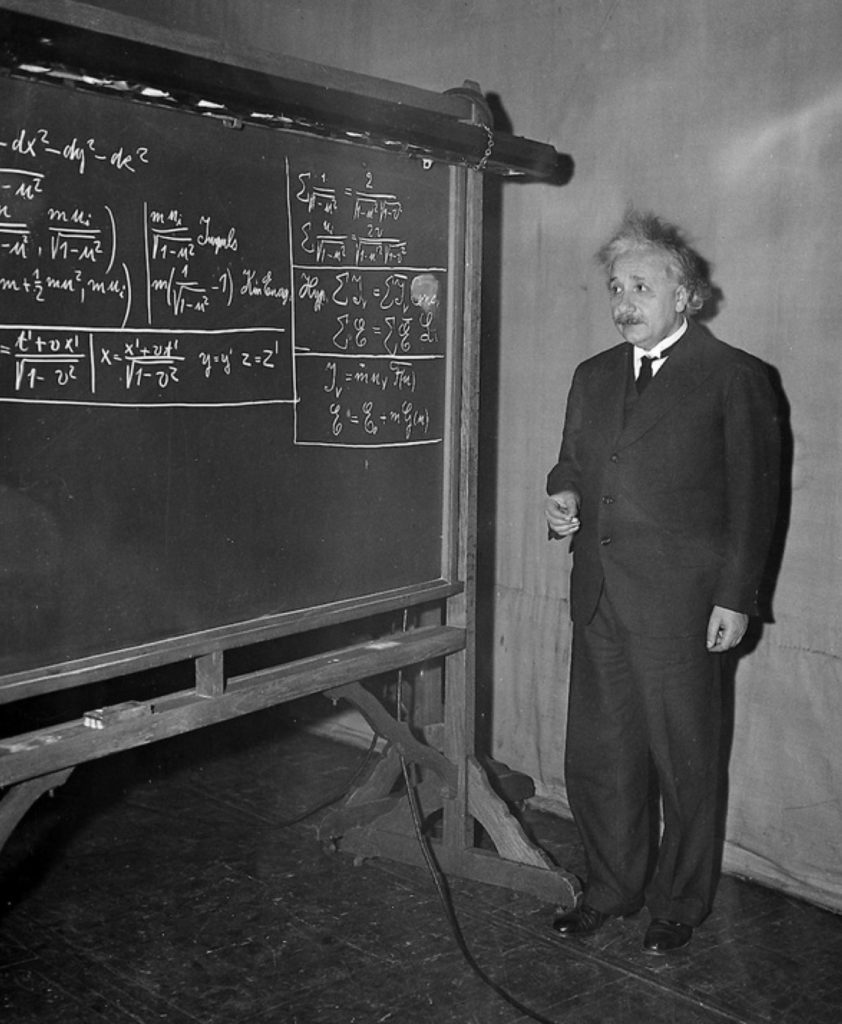
Mathematics is a language like English, Spanish or Chinese. While natural languages use words to represent ideas, concepts, and relationships, mathematics uses numbers and variables for the same purpose. You cannot touch a noun, but you can touch the object to which the noun refers. If we say that a particular planet is a “sphere” we have a visual concept of what that means, but we cannot touch the word “sphere.” Similarly, in mathematics, we use an equation to define a sphere, but the equation of a sphere is not a sphere.
In the visual arts, we may draw a sphere and, although we can touch the 2-dimensional representation of the sphere, we are touching something that is not a sphere. Similarly, we can touch the equation of a sphere on a blackboard, but that equation merely represents a sphere. In short, language, art and mathematics are all abstractions of objects in our real world.
The distinction between an external “reality” composed of things that are tangible and the abstract reality of language and mathematics is a major focus of the branch of philosophy known as epistimology. In his Critique of Pure Reason, Emmanuel Kant distinguished between analytical truths–those, independent of observation and derived from purely logical deduction–and synthetic truths–those derived from experience and observation. He believed that the brain superimposes its a priori “axioms of understanding” on the external reality to make sense of it. He asserted that the mathematical axioms are analytical truths while the postulates of science are synthetic.
In his landmark publication, A Mathematician’s Apology, famous number theorist, G. H. Hardy was unapologetic about the fact that number theory, unlike applied mathematics, had no real application to anything of use. He asserted:
The “real” mathematics of the “real” mathematicians, the mathematics of Fermat and Euler and Gauss and Abel and Riemann, is almost wholly “useless,” …, and both Gauss and lesser mathematicians may be justified in rejoicing that there is one science, … , whose very remoteness from ordinary human activities should keep it gentle and clean.
Ironically, a few decades later, the RSA cryptosystem, based on such “useless” ideas, found extensive use by financial institutions in protecting confidential information. Pure mathematics has been developed by brilliant people exploring relationships among the abstract entities in mathematics and expressing these results as theorems. They initially appear to have no application until a scientist reaches into the mathematical toolbox and finds the precise instrument needed to build or verify a theory. That was what Albert Einstein did when he developed the General Theory of Relativity using mathematical entities called tensors. And the wonderful thing about mathematical theories is that they can be used to make predictions that observation can confirm or refute.
Tangible things are perceived through the senses, while languages like mathematics are perceived through the analytical truths (in Kant’s terminology) that are hardwired into our brains.
